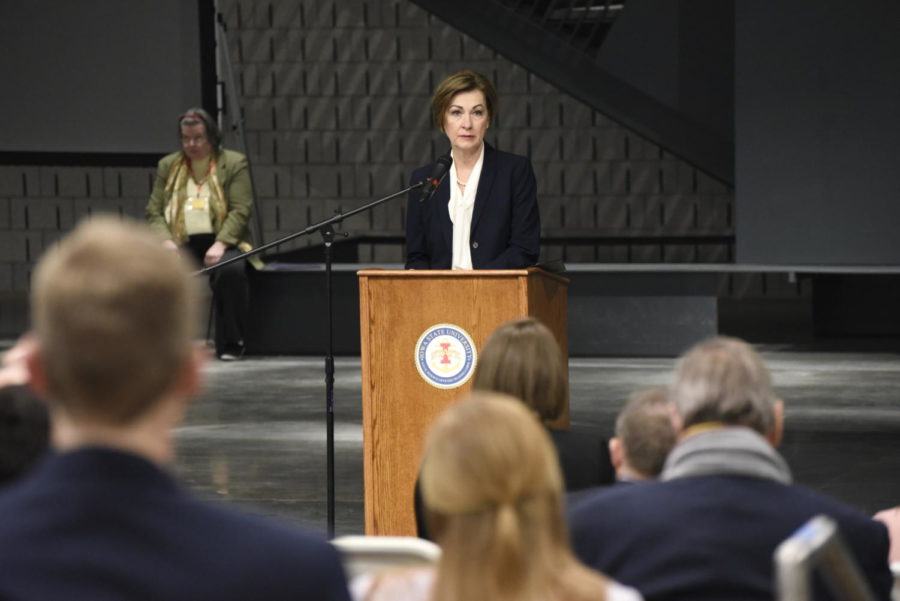Gov. Reynolds announces various accessibility initiatives in rural Iowa
Caitlin Yamada/ Iowa State Daily
Gov. Kim Reynolds delivering a speech at the 2020 Deterrence and Assurance Academic Alliance Workshop and Conference on March 11 in the Student Innovation Center.
July 14, 2020
Gov. Reynolds focused on accessibility for rural Iowa communities with Lt. Gov. Adam Gregg in her Tuesday press conference from the All Cultures Equal center in Webster City, IA.
Reynolds began the conference by simultaneously stressing the importance of reopening schools for the upcoming academic year and improving internet access across rural Iowa in this time of heavy internet reliability.
Reynolds said 17 broadband projects have been funded by the legislature, which will provide service coverage to “well over 10,000 households, 16 schools and more than 2,300 businesses.”
“Connectivity is key, and in the wake of COVID-19, we understand that it’s critical to every aspect of our recovery,” Reynolds said. “Despite the challenges of 2020 with [the] budget, I am truly grateful to the legislature, again, that they approved $5 million for rural broadband. I intend to also dedicate a significant amount of our federal CARES funding for internet connectivity and capacity.”
Reynolds also announced the formation of a new task force with the goal of recruiting and training EMS volunteers in rural communities. She encouraged volunteers to sign up.
Gregg, who co-chairs the Governors Empower Rural Iowa Initiative, then took to the podium to discuss the Rural Innovation Grant Program and the requirements needed to receive said grants.
“Requests can range from $1,000 to $20,000 and must focus on investing, connecting or growing rural Iowa,” Gregg said. “There is a local match requirement. Projects must exist and benefit a community with a population of 20,000 people or less and non-adjacent to a city with a population of 40,000 or more.”

















